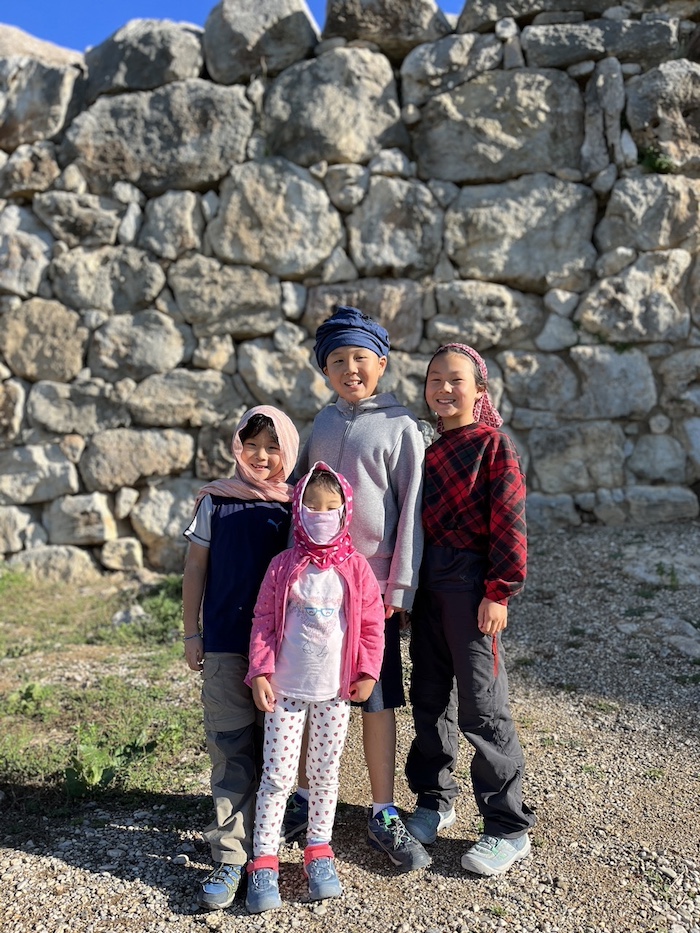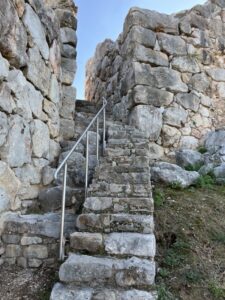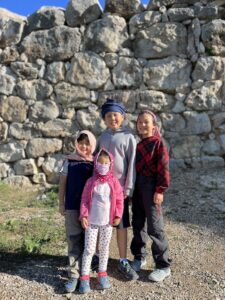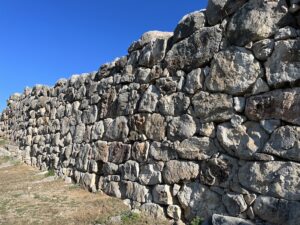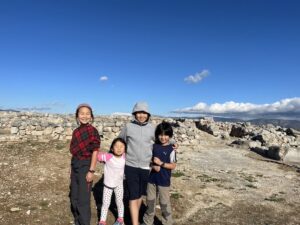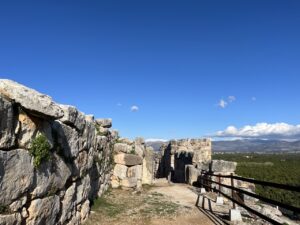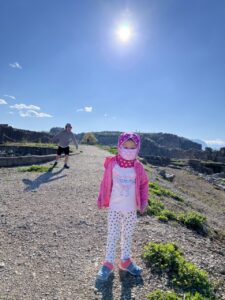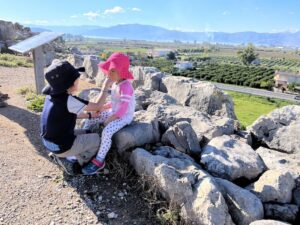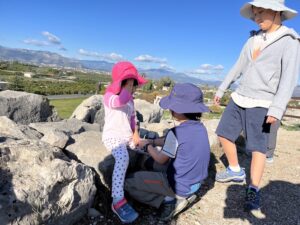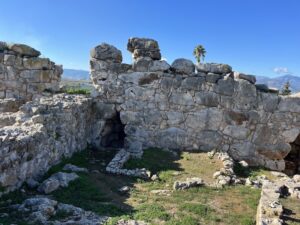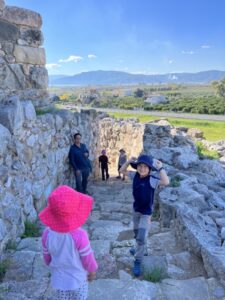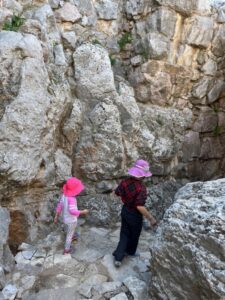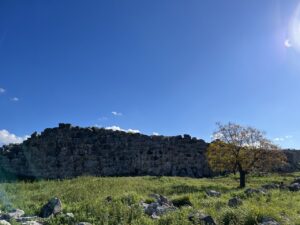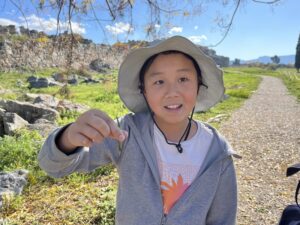Tiryns, about 20 kilometers from Mycenae, is considered one of the significant Mycenean centers. It peaked in wealth and importance in the 13th century BC. Because of its proximity to the sea, it was an important port in the Bronze Age trading network. The relationship between Mycenae and Tiryns was unclear, though likely ranged from friendly to adversarial throughout the centuries. Some archaeologists believe Tiryns was the trading port of Mycenae.
According to legend, Tiryns was founded by Proitos, prince of Argos and brother of Akrisios (grandfather of Perseus who was the the founder of Mycenae). Archaeological evidence supports the timeframe implied by the genealogy that Tiryns was founded before Mycenae. After Proitos fled to Lycia because he was being pursued by his brother, he returned to the site with the Cyclops who constructed the walls using enormous boulders. We could easily see that the size of the stones are larger than those used at Mycenae. The cyclopean masonry that surrounds the citadel is up to 8 meters thick in some areas and 13 meters high.
Tiryns, about 20 kilometers from Mycenae, is considered one of the significant Mycenean centers. It peaked in wealth and importance in the 13th century BC. Because of its proximity to the sea, it was an important port in the Bronze Age trading network. The relationship between Mycenae and Tiryns was unclear, though likely ranged from friendly to adversarial throughout the centuries. Some archaeologists believe Tiryns was the trading port of Mycenae.
According to legend, Tiryns was founded by Proitos, prince of Argos and brother of Akrisios (grandfather of Perseus who was the the founder of Mycenae). Archaeological evidence supports the timeframe implied by the genealogy that Tiryns was founded before Mycenae. After Proitos fled to Lycia because he was being pursued by his brother, he returned to the site with the Cyclops who constructed the walls using enormous boulders. We could easily see that the size of the stones are larger than those used at Mycenae. The cyclopean masonry that surrounds the citadel is up to 8 meters thick in some areas and 13 meters high.
In addition to its founding story, Tiryns is immortalized in Greek legends. It was at Tiryns that King Eurystheus asked Heracles to perform the 12 labors.
We visited the archaeological site of Tiryns the day after we were in Mycenae. Tiryns is a less popular tourist sight compared to Mycenae because it is arguably less visually stunning, doesn’t have the photogenic Lions Gate entrance and is smaller than Mycenae. It was a picture-perfect day with clear blue skies and we were the only visitors at Tiryns that morning.
Compared to Mycenae, the ruins were in better condition with enough foundations, walls and walkways remaining that we could almost make out the rooms in the palace, especially the megaron. In its day, the area below the citadel was surrounded by a substantial settlement. Today, the site is lined on one side by industrialized farms.
We climbed to the top of the palace and were exploring the ruins when EY, while pretending she was flying around with wings, tripped on a rock and bumped her head on a protruding stone. It gave us a scare but luckily she was fine with just a small bump on her head. The other kids all gathered around her to comfort and care for her.
From pre-learning with YouTube videos earlier in the morning, we learned about several features of the citadel and went about trying to find them. There are a number of triangular openings that lead down in angled shafts through the thick walls to cisterns just outside of the citadel. The cisterns provided a supply of fresh water to Tiryns which was critical in times of peace and especially war.
We learned about a special entrance/exit on the southern side of the citadel known as a “sally port”, a controlled, protected passageway leading to the outside of the citadel. While we were searching for it, we encountered what seemed to be a secret entrance or tunnel into the citadel. It was far too small for grown men and it turned out to be a dead end. We aren’t sure what it was used for.
We continued our search and found the sally port. The narrow passageway, added to the outside of the citadel around 1200 BC, would have been a means for troops to exit the fortress from a less obvious direction and a treacherous means of entry for intruders who would not have known what lay ahead. Intruders would have rushed toward an opening in the wall of the citadel only to find that they were in a narrow staircase with right-angled turns that would have slowed them down enough for defending soldiers to fight them back. Soldiers would have pelted them with stones or poured hot oil onto them as they tried to climb the stairs.
We left the images of battles and bloodshed behind and walked on the gravel path back to the parking lot. The kids spotted grasshoppers in the grass and wanted to see if they still had the speed and reflexes needed to catch the “boys”, the name they had given the grasshoppers when they first discovered them in Kenya and again in South Africa. The children hunted the “boys” with the stealth and agility of kids who have spent time in the wild. And then they set them free.
Author
-

Song is the mother of four children. She and her family have stepped away from it all and in September 2023, began traveling the world while homeschooling. Song is an ABC (American born Chinese) and has an undergraduate degree from Cornell and an MBA from Harvard. She is an entrepreneur and an educator. Her hobbies include learning, traveling, reading, cooking and baking, and being with children.

